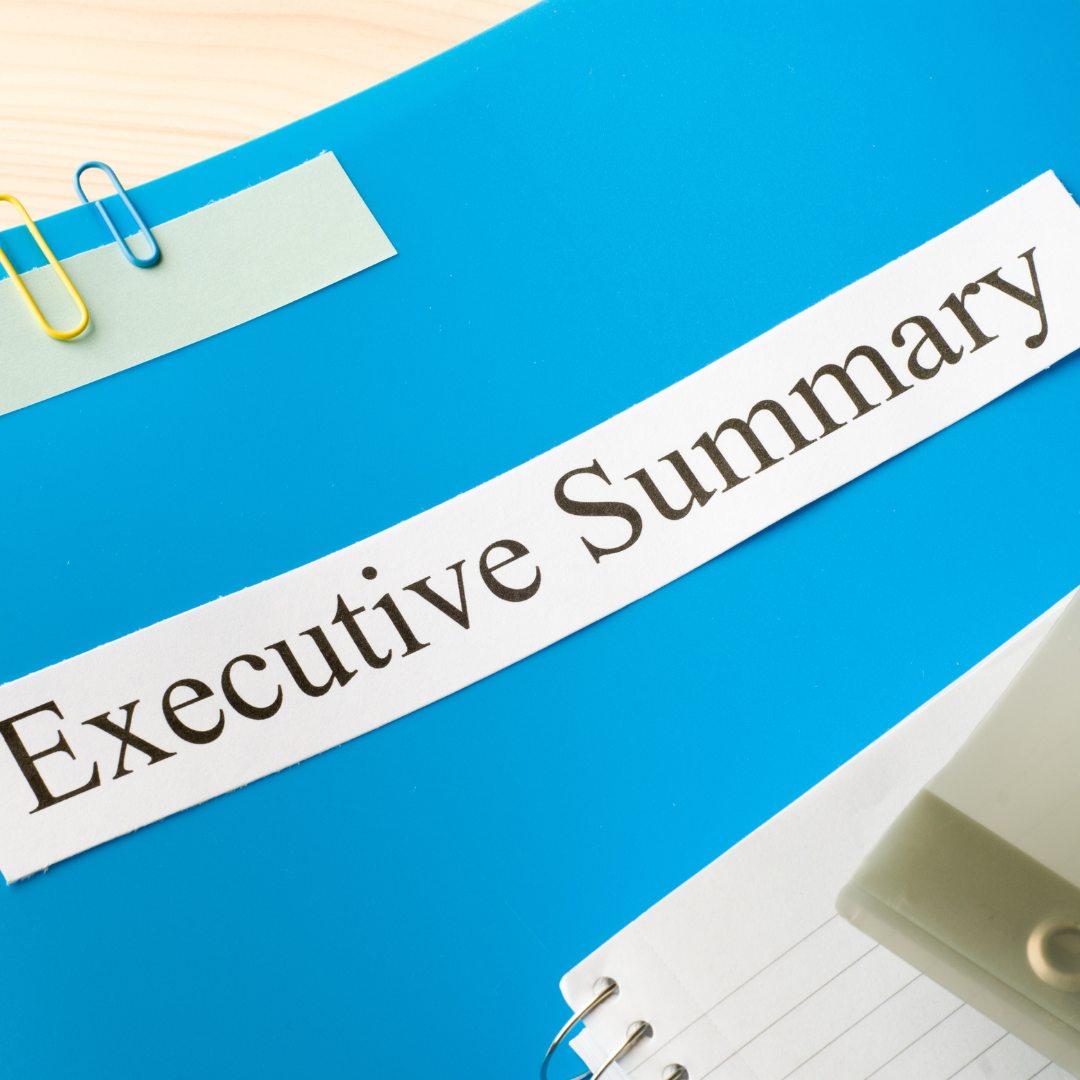When to Write the Executive Summary

Proposal professionals understand the pivotal role that executive summaries play in convincing customers of the value your proposal offers. They unanimously agree that an executive summary must demonstrate a deep understanding of the customer’s requirements and illustrate how your solution aligns seamlessly with their objectives, ultimately delivering superior value. Additionally, they agree that executive summaries should be clear, concise, and easy to read.
However, a notable point of contention among proposal professionals lies in the timing of the executive summary. Some argue for its creation at the outset, seeing it as a valuable briefing tool. Conversely, others want to create it after the bulk of the proposal is developed, citing the need for a comprehensive grasp of objectives and solutions to articulate them effectively.
Consider these pros and cons when deciding when to tackle the executive summary.
Pros of Writing the Executive Summary First
- Maintain focus: Initiating with the executive summary keeps objectives at the forefront throughout the proposal.
- Unified vision: It fosters a coherent vision of the solution, aiding proposal writers in maintaining consistency.
- Early issue identification: Writing the executive summary early lets you spot potential issues or problems in the proposal’s direction sooner.
Cons of Writing the Executive Summary First
- Creativity and flexibility constraints: It might limit creative exploration and flexibility in proposal development.
- Incomplete information: At the outset, you may lack the comprehensive data required to craft an effective executive summary.
- Revision requirements: You may need to revise the executive summary multiple times as the proposal evolves.
Conclusion
The decision of when to create the executive summary doesn’t have to be binary. Instead, proposal professionals can benefit from a flexible approach. Develop the initial executive summary draft when the pursuit decision is made and use it as an internal briefing tool. Then, consider refining it at various stages throughout the proposal lifecycle to incorporate the latest developments in your thinking. Finally, thoroughly evaluate it after the final document review to verify it aligns seamlessly with the completed proposal.
This adaptable approach empowers proposal professionals to balance early planning and the wisdom gained from in-depth proposal development. This results in a compelling and persuasive executive summary that aligns with the overarching proposal.
By Brenda Crist, Vice President at Lohfeld Consulting Group, MPA, CPP APMP Fellow
Lohfeld Consulting Group has proven results specializing in helping companies create winning captures and proposals. As the premier capture and proposal services consulting firm focused exclusively on government markets, we provide expert assistance to government contractors in Capture Planning and Strategy, Proposal Management and Writing, Capture and Proposal Process and Infrastructure, and Training. In the last 3 years, we’ve supported over 550 proposals winning more than $170B for our clients—including the Top 10 government contractors. Lohfeld Consulting Group is your “go-to” capture and proposal source! Start winning by contacting us at www.lohfeldconsulting.com and join us on LinkedIn, Facebook, and Twitter.
Paperback or Kindle
10 steps to creating high-scoring proposals
by Bob Lohfeld
contributors Edited by Beth Wingate
Subscribe to our free ebrief
Teaming friends, frenemies, and enemies—12 tips to mitigate harmful effects
Did you know that contracting officers spend up to 20% of their time mitigating disputes between teaming partners? In an informal poll we conducted on LinkedIn last month, 40% of respondents classified their teaming partners as “frenemies” on their last bid.
Explore Further
- Advice (446)
- AI (5)
- APMP (17)
- Business Development (198)
- Capture Management (197)
- Favorite Books (5)
- Go-to-Market (27)
- Graphics (6)
- Lohfeld Books (3)
- Past Performance (58)
- Post-submission Phase (15)
- Pre-RFP Preparation (211)
- Proposal Management (270)
- Proposal Production (60)
- Proposal Reviews (27)
- Proposal Writing (77)
- Pursuit Phase (89)
- Research Report (2)
- Resources (60)
- Tools & Tips (259)
- Training (10)
- Uncategorized (220)

Sign Up for INSIGHTS and Download your FREE book
We'd love to help you with your proposals. Enjoy our complimentary Lohfeld Consulting Group Capture & Proposal Insights & Tips book with your FREE subscription to our Insights Newsletter.
GET YOUR FREE BOOK




